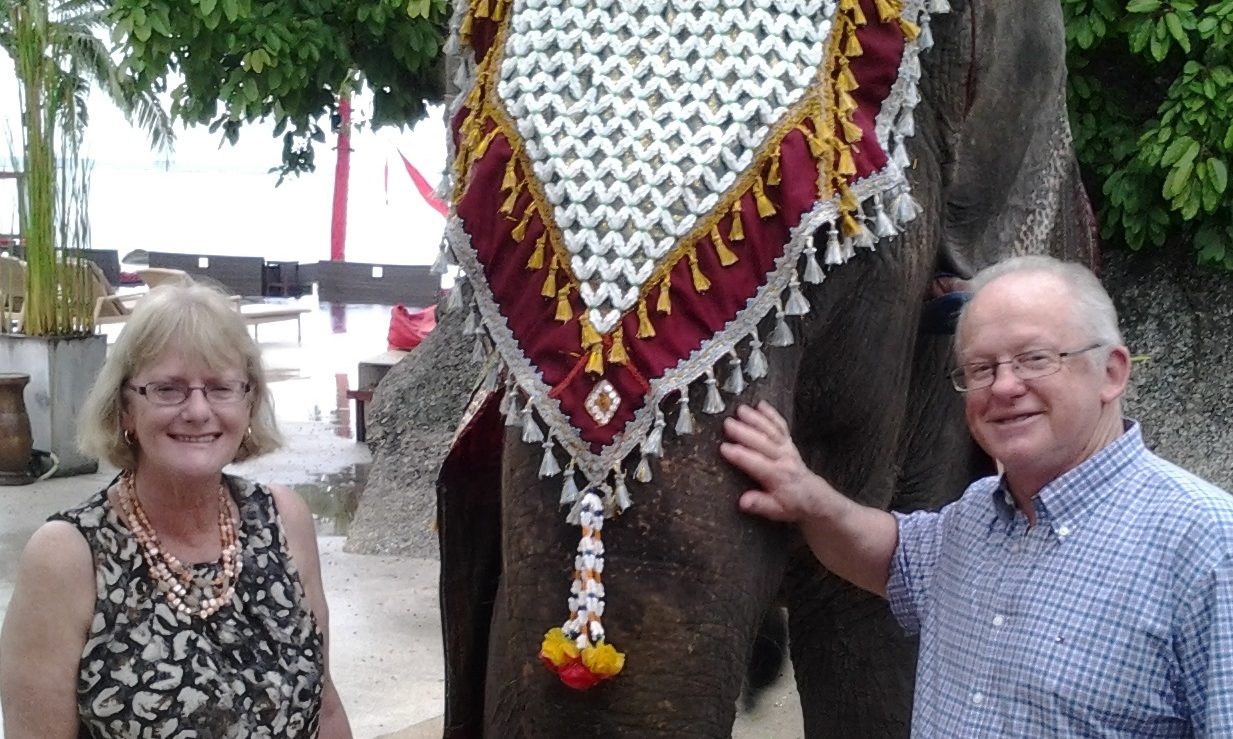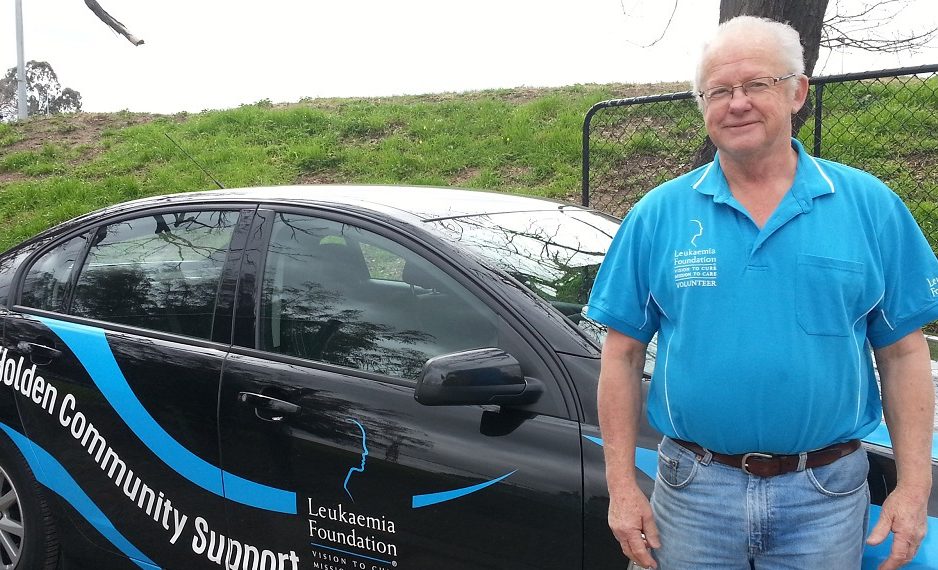I’ve beaten a heart attack and CML

Since Chris Davis’ diagnosis with chronic myeloid leukaemia, he’s had three different treatments, endured debilitating side-effects, has taken part in an international clinical trial and is now disease-free.
Chris, 69, of Melbourne (pictured above with wife Mary), discovered he had CML by accident in August 2005. Prior to that, he regularly rode 100km on his bike, had taken up rowing again, and was about to rack up 30 years operating his own trucking business.
“In April 2005 I noticed I was starting to feel like I was getting old. I was getting low on horsepower and every time I exerted myself I had pain in my back and shoulders,” Chris said.
When his daughter found out she had haemochromatosis, Chris had a blood test to see if he had the inherited iron overload disorder too. It turned out that his iron levels were fine but his white blood cell count was up to 67.3; he had CML.
“I had no idea what CML was. I asked my GP for a rough prognosis and he said my best case scenario was 12 months of ‘normal life’; he wasn’t aware of the new treatment (imatinib) which had become available.”
When he consulted a haematologist after his diagnosis, Chris mentioned the pain he felt when he did anything strenuous, only to discover he was on the brink of a massive heart attack. Not as it turned out because he had a heart problem, but because his blood was too thick to pump normally through his heart.
His treatment for CML was delayed for a week while he had his heart checked and in September 2005 Chris went on the first-generation tyrosine kinase inhibitor (TKI), imatinib (Glivec®). He was severely affected by a range of side-effects including eye problems that affected his sight, extreme sensitivity to the sun, nausea, fatigue and walking was always difficult.
“Glivec used to make me sick every time I took it. It was horrible. But it did the trick – it got my white blood cell count down and I have to be grateful for that.
“But the Glivec was very hard on my liver in particular, and after 18 months of treatment, I had to go off the drug before my liver collapsed.
“I needed another treatment but there wasn’t anything available at the time.”
Over the next six weeks, Chris felt that the CML was coming back, and this was confirmed by a blood test.
“Then I was offered a three-month free trial for dasatinib (on compassionate grounds) before it was listed on the PBS.”
After four months on the second generation TKI, dasatinib (Sprycel®), his BCR-ABL count reached zero: “It got down to less than 1 cell in 10 million and stayed at that level.”
However, after 18 months on dasatinib, Chris could hardly walk and was literally drowning from the build-up of fluid in his lungs.
“If I tried to mow the lawn, I’d pass out.” So, in October 2008 Chris changed his treatment again, moving on to nilotinib (Tasigna®).
He took nilotinib consistently for 4½ years until he was asked to take part in a clinical trial for people with a deep molecular response to their TKI treatment.
“I thought I’ve got nothing to lose and everything to gain and I was glad to get off drugs for a while,” said Chris about his decision to go on the trial.
“My motive was to get off the stuff that I had to take every day for the rest of my life. I constantly felt sick and was always half an hour away from vomiting.”
By that time he’d had more than five years with less than one (CML) cell in ten million – considered a deep molecular response.
“I had taken my tablets religiously for over seven years. There was hardly a day when I missed a dose. I wasn’t going to wimp up on anything and because I stuck to it so hard, the CML had become undetectable.”
In August that year, Chris was given the ‘all clear’.
“It was a bit of a surprise. I called my daughter and she burst into tears. I’d beaten a heart attack and leukaemia!”
It is now nearly a year since Chris has had a blood test and he hasn’t had any medication relating to leukaemia since January 2013.
“It’s like I’ve had three lives. There’s the life I used to have before CML, my life on drugs that I have no memory of, and now, when I have another chance at life and it’s utterly brilliant.
“Sometimes, these fierce challenges show you what’s right and what’s wrong in the world. I’ve fought off the devil and won, I’ve tested myself to the limit and won. I never gave up.”
Chris says he’s happily married to Mary, his wife of 48 years, and they have a wonderful life together in retirement. He has five “beautiful grandchildren” and prides himself in being ‘the softest granddad in the world’.
“Life’s pretty darn good – I can tell you that.”
Chris and the Leukaemia Foundation
The first thing Chris did when he retired was to work for the Leukaemia Foundation as a volunteer driver.

“I get the biggest buzz out of doing this and a big warm feeling inside.
“The great advantage of having had leukaemia is that you have immediate empathy with the people whom you are driving to and from appointments.
“I picked up a lady in her seventies one day who was accompanied by her daughter. She had looked a bit sad and sorry for herself so I cracked a few cancer jokes and she was smiling by the time I dropped her off. Her daughter rang me later and said ‘thanks for making mum laugh’. God, I felt good.
“I’m also Blood Buddy and have been a Buddy to two people so far. It’s good for me and I hope it’s good for them too.”
His first contact with the Foundation was when he picked up a brochure in hospital soon after getting CML, and he subsequently went along to a support meeting.
“I think the Foundation is terrific. I love the camaraderie and doing something positive – that’s a big thing.”
Last updated on August 6th, 2020
Developed by the Leukaemia Foundation in consultation with people living with a blood cancer, Leukaemia Foundation support staff, haematology nursing staff and/or Australian clinical haematologists. This content is provided for information purposes only and we urge you to always seek advice from a registered health care professional for diagnosis, treatment and answers to your medical questions, including the suitability of a particular therapy, service, product or treatment in your circumstances. The Leukaemia Foundation shall not bear any liability for any person relying on the materials contained on this website.